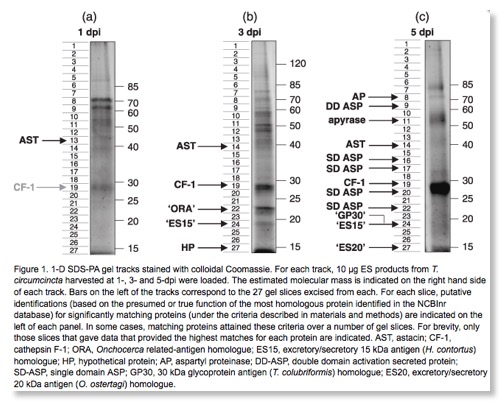Parasite proteomics

Smith, S.K., Nisbet, A.J., Meikle, L.I., Inglis, N.F., Sales, J., Beynon, R.J. & Matthews, J.B. (2010) Proteomic analysis of excretory/secretory products released by Teladorsagia circumcincta larvae early post-infection. Parasite Immunology 31, 10-19 [PUBMED][PDF]
Teladorsagia circumcincta is an important parasitic nematode of domestic small ruminants. Drug resistance in this species is common so alternative methods of control are required. As animals develop immunity to T. circumcincta, vaccination is a valid option. Little is known about the antigens that play a role in stimulating immunity at this host/parasite interface. As responses generated between 1 and 5 dpi are known to affect development of these nematodes in their gastric niche, we focused on proteins released during the early stages of infection. To identify molecules potentially involved in immunity, we undertook a proteomics analysis of proteins released from larvae harvested at 1-, 3- and 5-days post-infection (dpi). This analysis produced peptide sequence data that was used to search information available in T. circumcincta expressed sequence tag (EST) databases and enabled identification of a number of excretory/secretory (ES) proteins. Immunoblots were performed to assess the relative molecular weight of ES antigens that were targets of local IgA responses in mucus from sheep rendered immune to infection. ELISA was performed to assess antigen-specific mucus IgA levels in individual sheep. These experiments provided preliminary evidence that the proteins identified in the larval secretome were subject to these antibody responses.